Wu MeiChi
BABY'S BABY
In the digital age we find ourselves in, the tension arising from the increasing blurring and dynamic disjunction between the virtual and real worlds is not only reshaping and expanding our cognitive and aesthetic experiences but also compelling us to further contemplate the relationship between authenticity and virtuality, as well as between representation and existence.
Baby’s baby is an exhibition that blends Wu MeiChi’s personal life experiences with her unique visual aesthetics. As one of Taiwan's most prominent young visual artists, Wu MeiChi’s contemporary perspective and individualized approach to the medium of media demonstrate her comprehension, adjustment, and contemplation of the evolving external reality. Furthermore, her work offers a broader response to the technological, social, cultural, identity, and aesthetic changes that the era is undergoing.
Wu MeiChi primarily utilizes a camera as her main creative tool, yet her artworks are neither conventional photography nor reliant on computer-generated visuals. Instead, through experimental scene construction, she consciously assembles compositions of matter and space that transcend the physical norms within her images. Preferring hands-on techniques over digital processes, she prints her photographs and subsequently manipulates them manually. This manipulation includes collage, reconstruction, and translation, resulting in images that boast nonlinear aesthetics, skillfully blending virtual and tangible spaces.
In her creative process, Wu MeiChi consistently incorporates objects and elements from her personal surroundings and experiences. With a distinct preference for inexpensive plastics, sequin materials, and fluorescent colors, her art embodies a bold and unconventional aesthetic. In our digitally dominated age, the fluorescent hues in Wu MeiChi’s pieces evoke the sensory immersion characteristic of our times.
Building upon this lineage of visual aesthetics, the exhibition Baby’s baby is anchored in Wu MeiChi’s personal life experiences and emotional narratives.
In the Picnic series, Wu MeiChi provides a visual representation of a past romantic experience. She incorporates the objectification of the body into her visual language by using images of reshaped body parts, installations of body part models, picnic baskets, plastic grass, wallpaper, and other diverse elements. In a profound and intricate manner, she portrays the feelings of loss and longing that arise after the conclusion of a relationship. The sense of loss conveyed in the artwork, enriched with a touch of antiquity and subcultural aesthetics, may evoke in viewers a nostalgic sorrow for the physical world, natural environments, and interpersonal interactions from the pre-digital age. This, in turn, sparks discussions on topics such as emotional memories and transitions in the digital era.
The Operating Room Party series highlights Wu MeiChi’s spirited, witty, and forward-looking approach to dealing with her chronic physical condition, especially as she approached an impending hip replacement surgery. These artworks not only depict the unique sense of seamlessly moving between virtual and real dimensions in today's digital world but also underscore her deeply held philosophical convictions, her unwavering commitment to “freedom” and “existence.” Perhaps, through these pieces, viewers may be inspired to contemplate the multi-dimensional aspects of life in our contemporary era.
The Baby’s Baby exhibition features a wide range of artistic expressions, encompassing traditional photography, object collages, digital paintings, textile tapestries, 3D animations, and diverse installations. Unified by Wu MeiChi’s distinct visual style, these various mediums come together to interweave emotions, from sorrow to joy and from nostalgia to celebration. Collectively, they offer a complex, dizzying, and symbiotic visual experience that blurs the lines between the virtual and the tangible.
In the emerging post-human era of human-machine integration that we are gradually entering, Baby’s Baby serves as a visual and sensory gateway. It enables us to explore the expansion of aesthetic experiences and emotional connections as we freely navigate between the virtual and real worlds. This, in turn, encourages us to contemplate contemporary issues such as the interplay between virtuality and reality, the dimensions of time and space, the broadening of perception, and matters of individual identity and existence.
Text By Joanna Fu



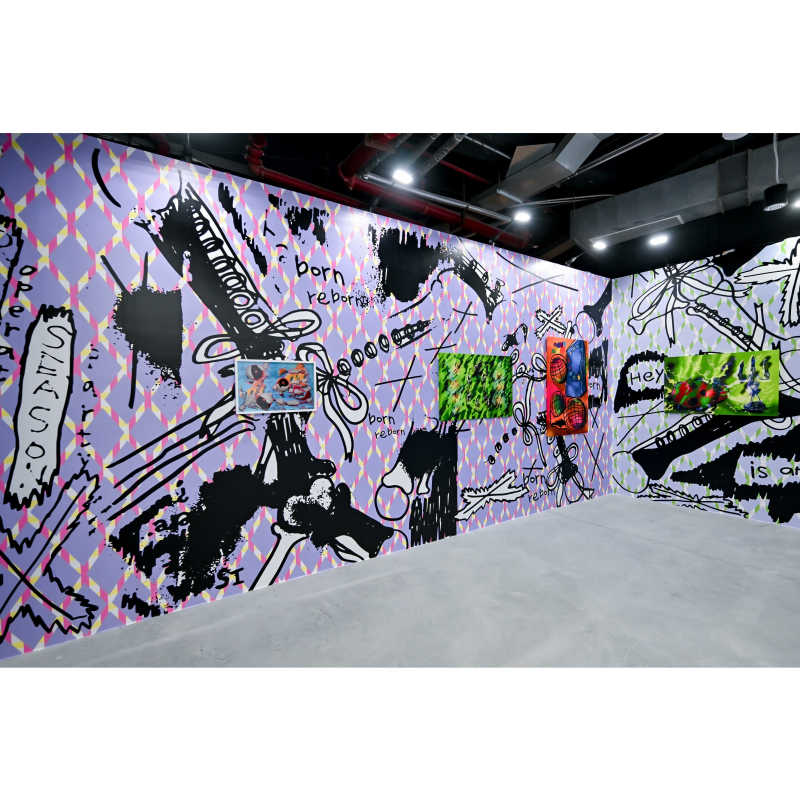

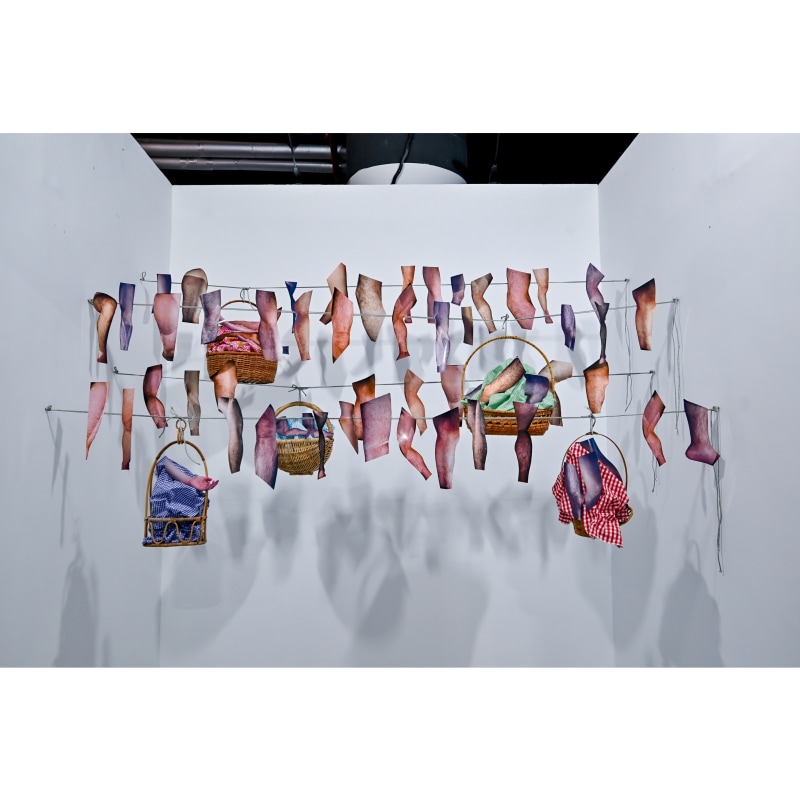
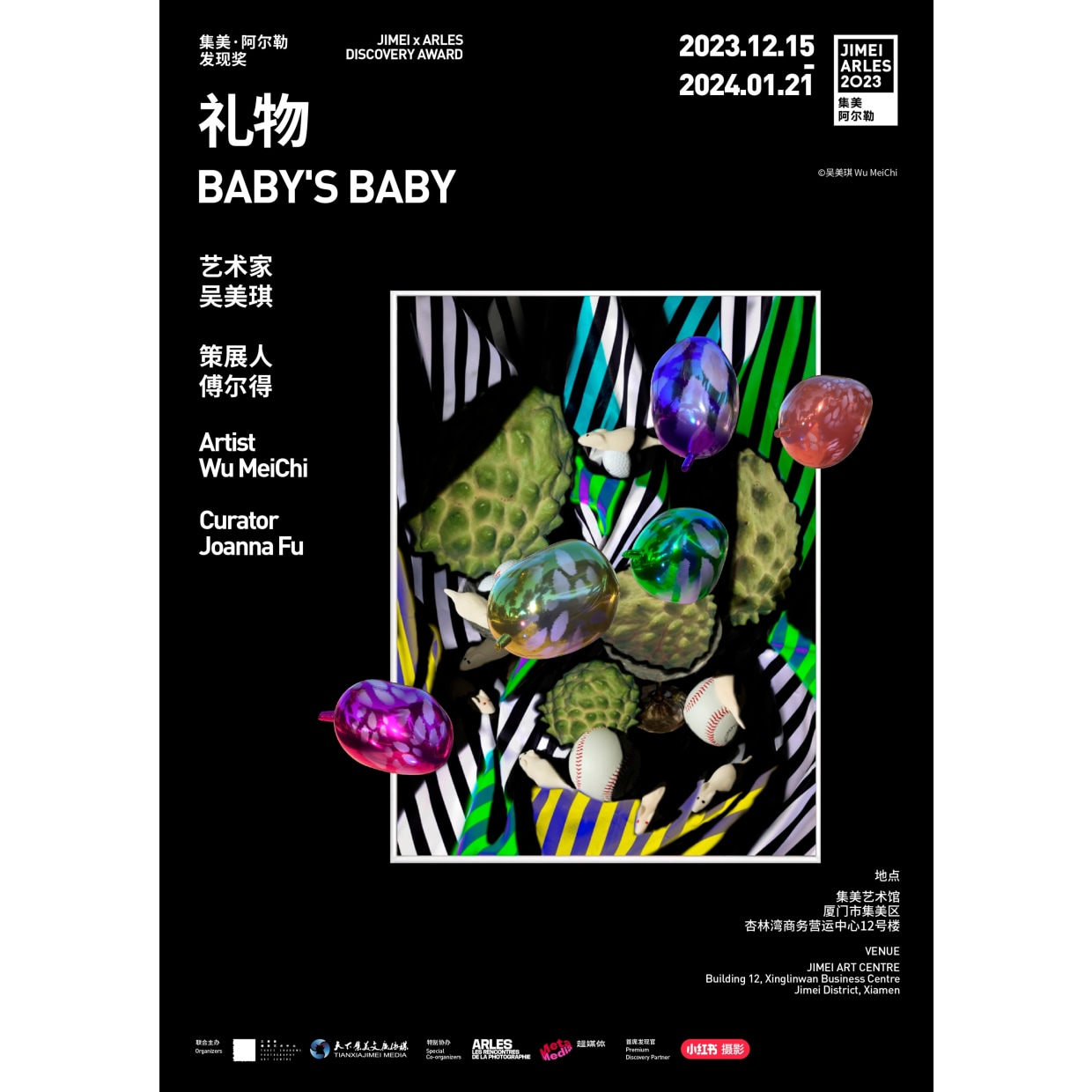
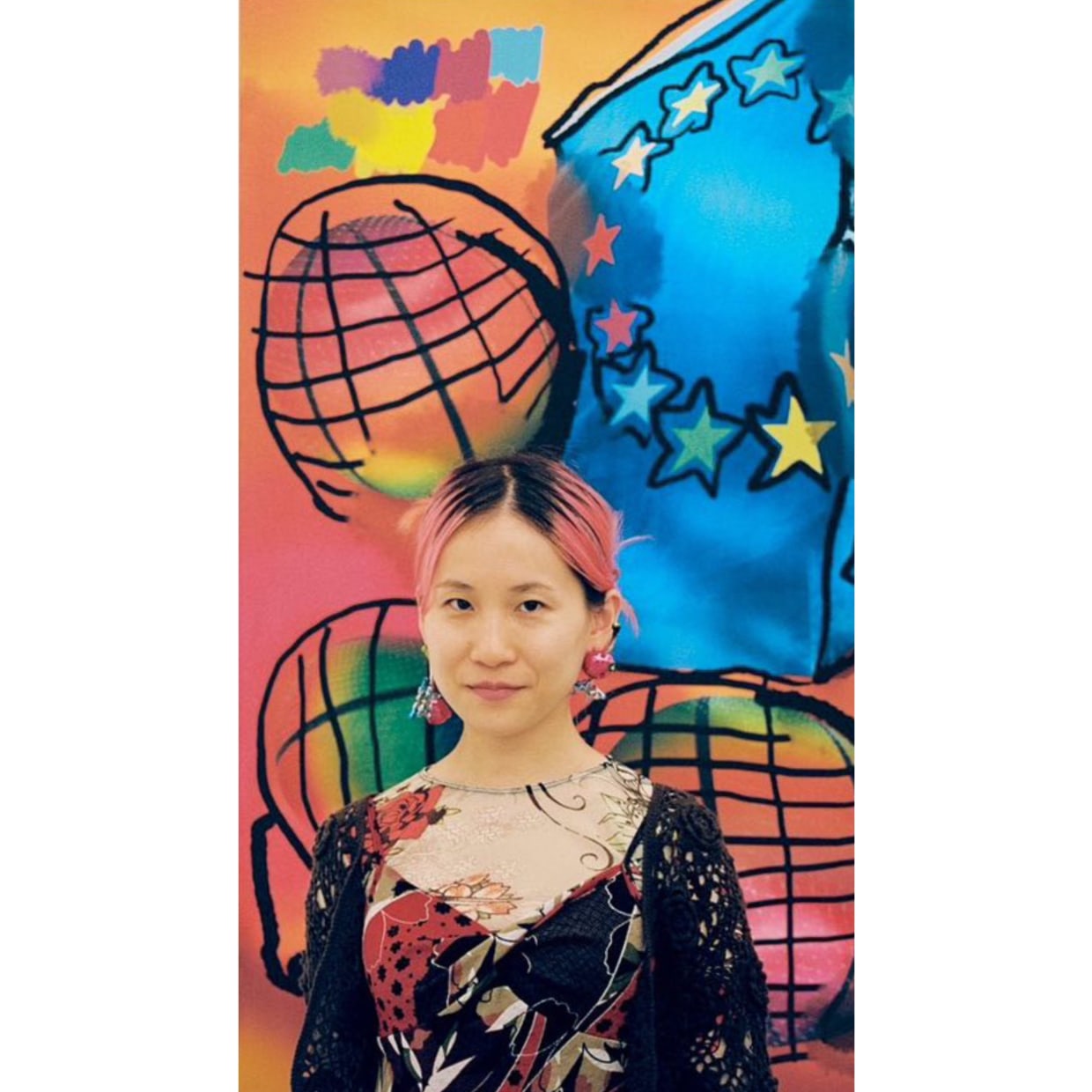 Portrait of Wu Meichi
Portrait of Wu Meichi Portrait of Joanna Fu
Portrait of Joanna Fu Wu MeiChi, "Intergalactic Circus (Passion fruit)", 2023. Video installation, 51secs, dimension variable. Courtesy of the artist.
Wu MeiChi, "Intergalactic Circus (Passion fruit)", 2023. Video installation, 51secs, dimension variable. Courtesy of the artist.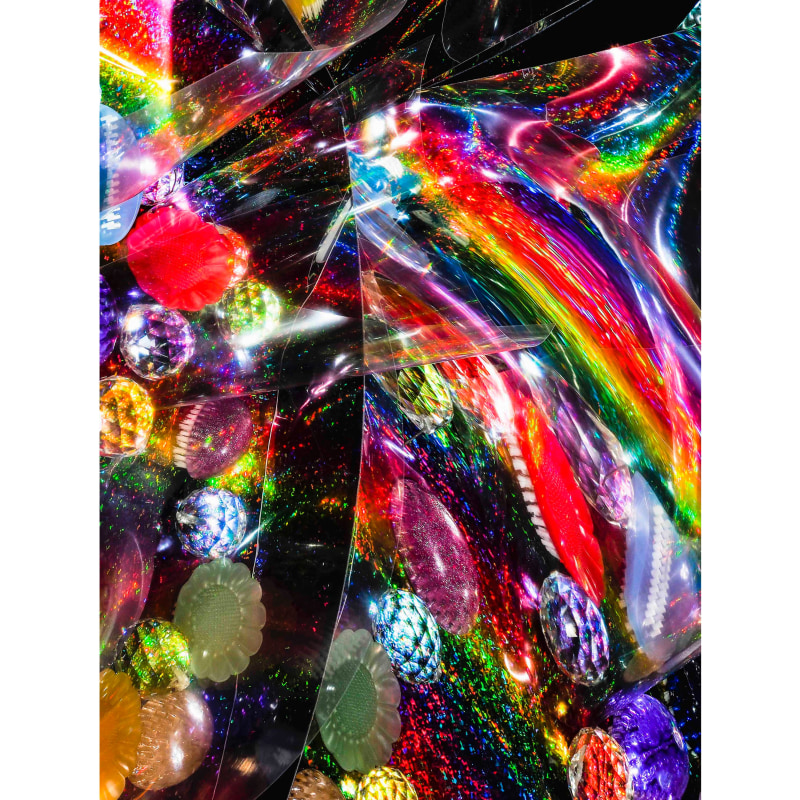 Wu MeiChi, "YXX-The Flares #8", 2019. Giclee print, 69 x 52 cm. Courtesy of the artist.
Wu MeiChi, "YXX-The Flares #8", 2019. Giclee print, 69 x 52 cm. Courtesy of the artist. Wu MeiChi, "Picnic #2", 2019-2021. Giclee print,197 x 131 cm. Courtesy of the artist.
Wu MeiChi, "Picnic #2", 2019-2021. Giclee print,197 x 131 cm. Courtesy of the artist.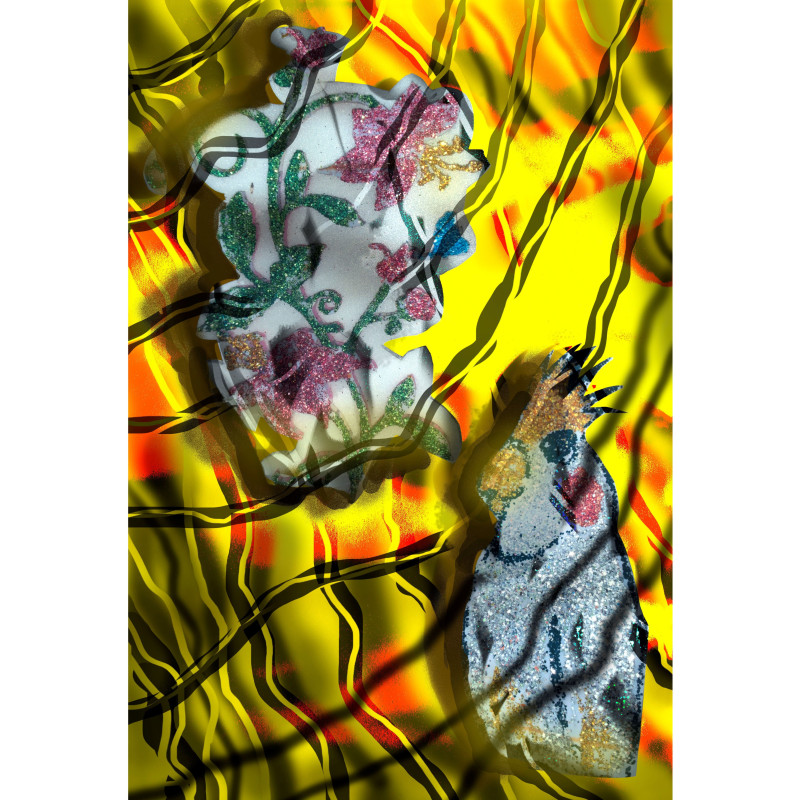 Wu MeiChi, "Golden Pizza House", 2023. Dye sublimation print on satin,115 x 78 cm. Courtesy of the artist.
Wu MeiChi, "Golden Pizza House", 2023. Dye sublimation print on satin,115 x 78 cm. Courtesy of the artist.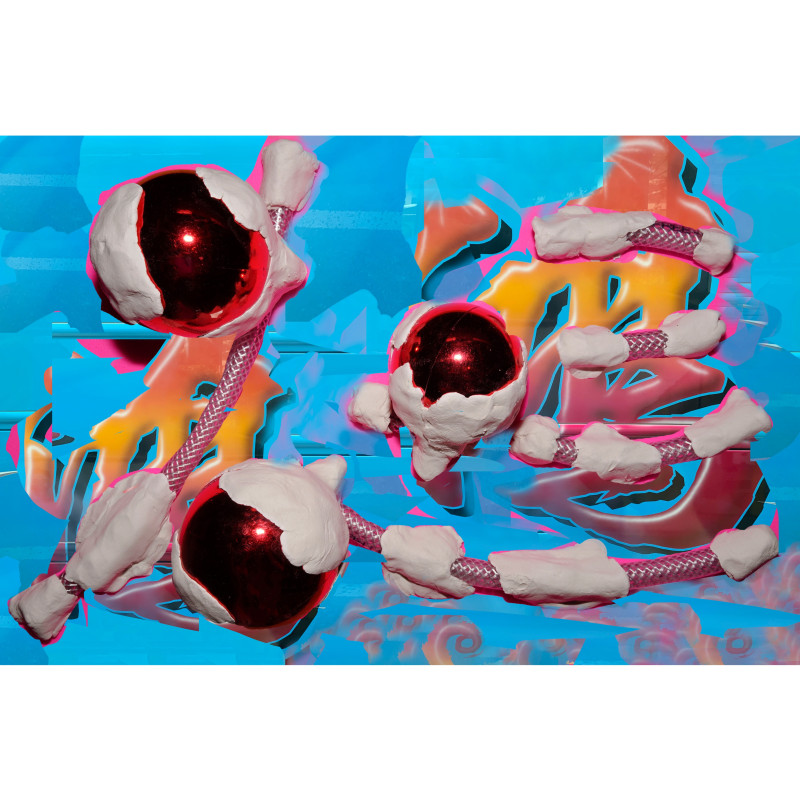 Wu MeiChi, "Operating room party (Grand)", 2022. Giclee print, 70 x 106 cm. Courtesy of the artist.
Wu MeiChi, "Operating room party (Grand)", 2022. Giclee print, 70 x 106 cm. Courtesy of the artist. Wu MeiChi, "New Year", 2023, Cotton, Polyester, Metallic blended, 146 x 100 cm. Courtesy of the artist.
Wu MeiChi, "New Year", 2023, Cotton, Polyester, Metallic blended, 146 x 100 cm. Courtesy of the artist.